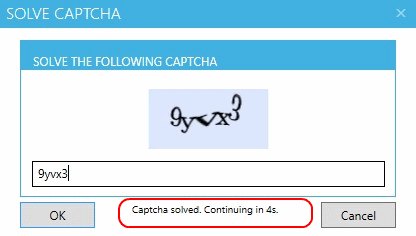

“We try to model the humanity of that interaction,” Aythami Morales Moreno, a biometrics researcher at the Autonomous University of Madrid in Spain, tells Inverse.īut there’s a problem with designing better CAPTCHAs: They have a built-in ceiling. Whenever you type, for example, there are tiny differences in the amount of time between keystrokes because your fingers have to travel across the keyboard.

Others seek out uniquely human behavioral qualities with CAPTCHAs that unlock depending on how the user interacts with their computer. Some CAPTCHAs now use visual cues, like picking out traffic lights or distinguishing between pictures of cats and dogs.

To beef up online security, computer scientists have come up with various additions to simple text-based tests. As a result, they became ubiquitous in the mid-2000s, popping up with virtually every internet purchase. Or at least, they were in the past.ĬAPTCHAs are meant to filter out malicious programs that might otherwise spam a website or attempt to steal, say, your credit card information.

But for many basic bots, they’re unrecognizable. Humans (supposedly) have no trouble reading these funhouse-mirror symbols. “Basically, the idea is to use a set of tasks that are difficult for computers, but kind of easy for humans,” Wang says. In a feat of acronym acrobatics that would make the folks at NASA (who brought us gems like MESSENGER and NuSTAR) proud, the Carnegie Mellon team named the system “CAPTCHA” for “Completely Automated Public Turing test to tell Computers and Humans Apart.”ĬAPTCHAs usually consist of a short line of slightly warped text and/or numbers - but not beyond most people’s recognition. In 1997, a group of researchers from Carnegie Mellon University and a team at cybersecurity company Sanctum each independently developed a way to thwart bots using distorted text. To post about said topics anyway, they would trick the bots by replacing specific letters with numbers or symbols (a method that eventually evolved into jargon called leetspeak).īy the late ‘90s, computer scientists had realized that these computer-confounding lines of text could help prevent data theft by halting scammer algorithms. Early internet forum users realized that moderator programs monitored words related to certain sensitive topics. Ironically enough, hackers essentially created CAPTCHAs in the late 1980s and early ‘90s. CAPTCHA tests arrived in the late ‘90s thanks to hackers.


 0 kommentar(er)
0 kommentar(er)
